Episode 241: The one with the Kevin Bacon animated gif in it
Welcome to HubShots Episode 241: The one with the Kevin Bacon animated gif in it This edition we dive into: Whether you actually read these notes ...
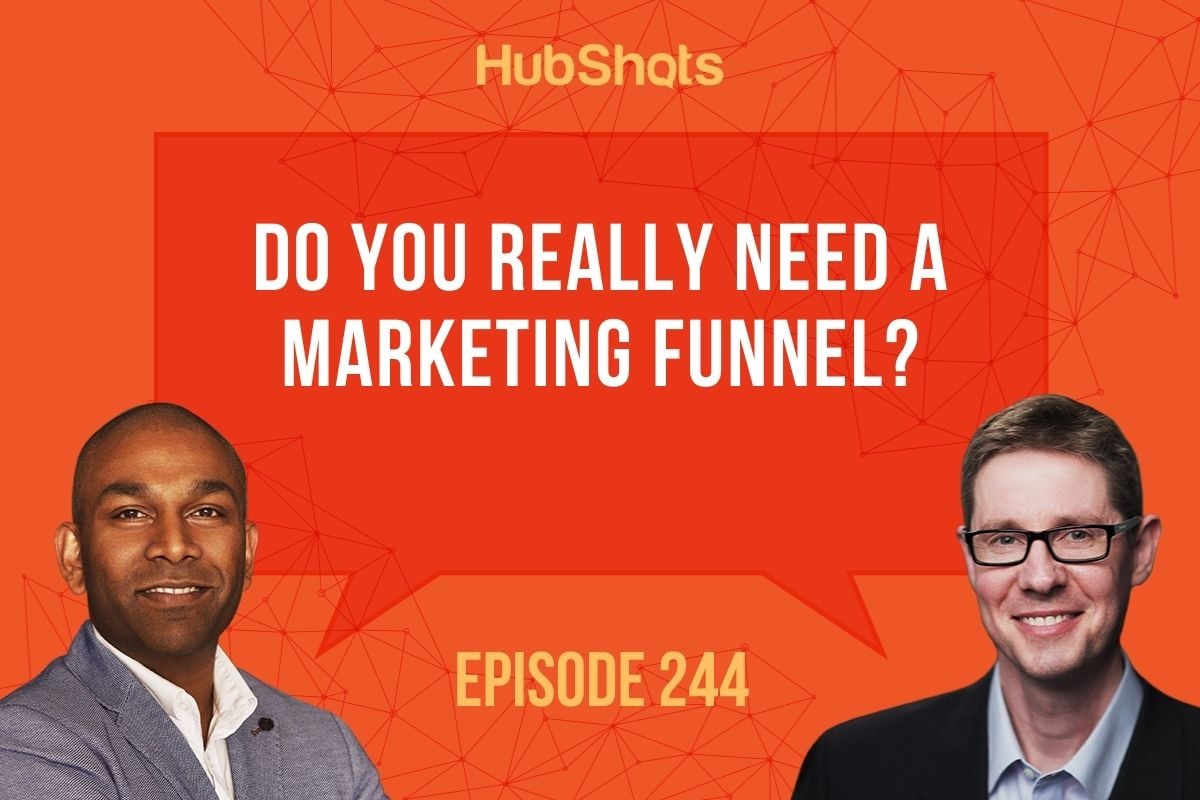
This edition we dive into:
You can listen to this episode of the show here.
Did a colleague forward this episode to you? Sign up here to get yours every Friday.
Please forward this on to your work colleagues.
Recorded: Monday 03 May 2021 | Published: Friday 07 May 2021
I was reminded of this while reading Avinash Kaushik’s newsletter recently, when he related the terrible customer service he (and his wife) had experienced with 2 large providers.
One of the things I’m always conscious of (and we’ve mentioned on the show many times) is that the level of customer support provided by companies is a very clear indicator (correlation and causation!) of future success. Examples we’ve discussed include Amazon, WP Engine and of course HubSpot.
So why isn’t excellence in customer support more common?
Cost cutting (of course) is the usual reason - and a recent experience with a large corporate customer of ours highlighted how it starts.
Our client - who I won’t name, but will say is a well known global brand - decided to cut back on their customer support options in the second half of last year. This included removing all telephone support and instead pushing support enquiries to a set of forms on the site. There was talk of a chatbot being added, but that hasn’t happened yet.
The marketing team weren’t involved in the decision at all (and are probably reading this and smiling) as the decision was made at upper management level, with little (it appears) research into the effects it would cause.
At the same time, the marketing team has received increased budgets, with a particular emphasis on customer retention (in addition to the usual customer acquisition campaigns) - I’m not making this up!
While one hand gives, the other is taking away.
It’s a strange situation, and has the added side-effect that because visitors looking for support can’t find it they click around the site in frustration - which appears (to upper management) as ‘increased engagement’!
So what does this all mean for you and me?
A few thoughts:
To your (customer’s) success!
Here’s a few quick items of interest we noticed:
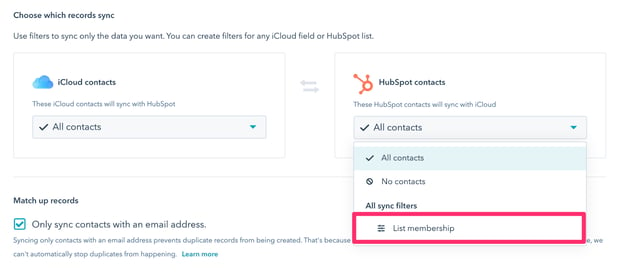
And why you need the HubShot 28-Day Marketing Challenge.
It may not be for you, but it may be for your business colleagues! If so, please let them know.
Warning - analogy alert ahead!
We were talking about it together and realised it is like buying a car in a kit/box.
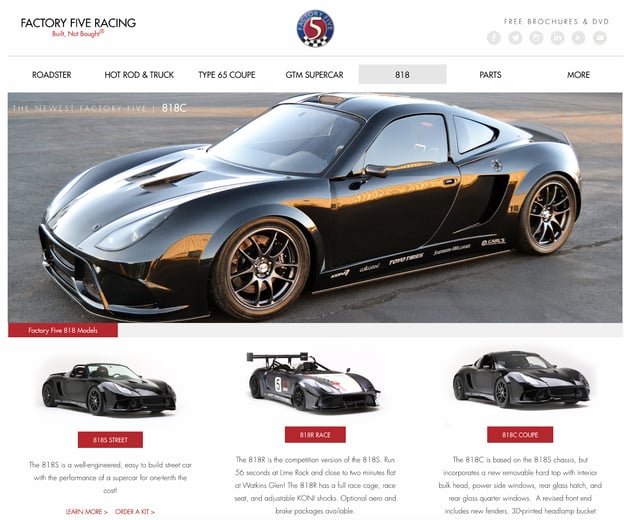
Now we are sure that this is not all but we would liken this to having HubSpot Marketing Professional and not having a campaign working. So are you ready to get your car on the road?
What was all that about?
We were trying to make the point that having HubSpot is like having a fantastic vehicle, but if it’s still in the box then it aint driving you anywhere - you need to take it out of the box and make it work for you. We’re here to help. Here’s the link again.
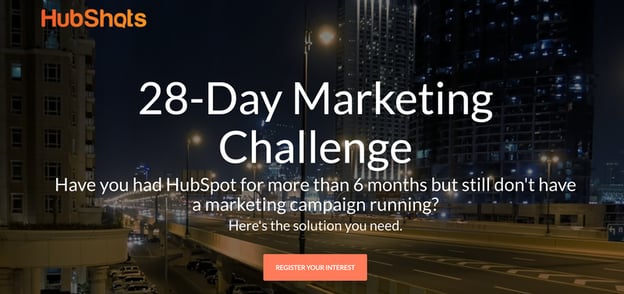
If your website is running on HubSpot CMS, it will probably have a www subdomain eg the HubShots site is at www.hubshots.com
What should you do if someone visits the non-www version ie hubshots.com
Previously you needed to set up a redirect with your domain registrar (eg Godaddy). That will still work of course, however it is now much easier to set up this redirect directly within HubSpot.
To do so you just need to add a Redirect domain in HubSpot.
Here’s the knowledge base article that guides you through (search for the word ‘apex’).
You just need to add two A records in your DNS, and HubSpot takes care of the rest (including SSL).
This was launched at the start of the year (and we mentioned briefly in episode 232) but worth highlighting here again - we had a client this week asking if it was possible, so wanted to remind everyone in case it had slipped past.
Something that many people have asked for and here we see the ability to choose which properties are on the deal board view along with the default properties.
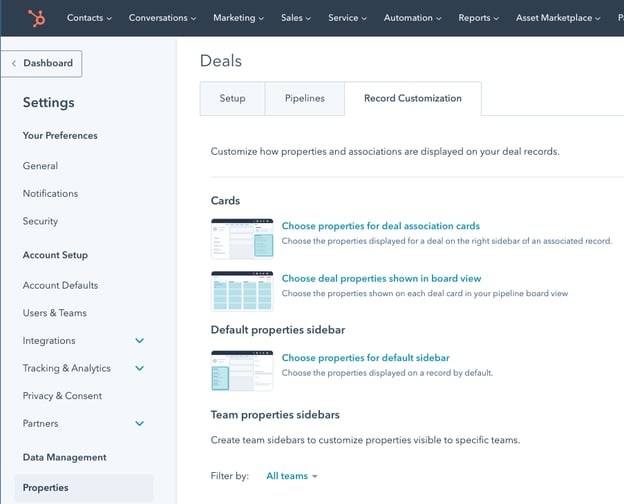
Here is an example of a deal card where you can choose 2 deal properties:
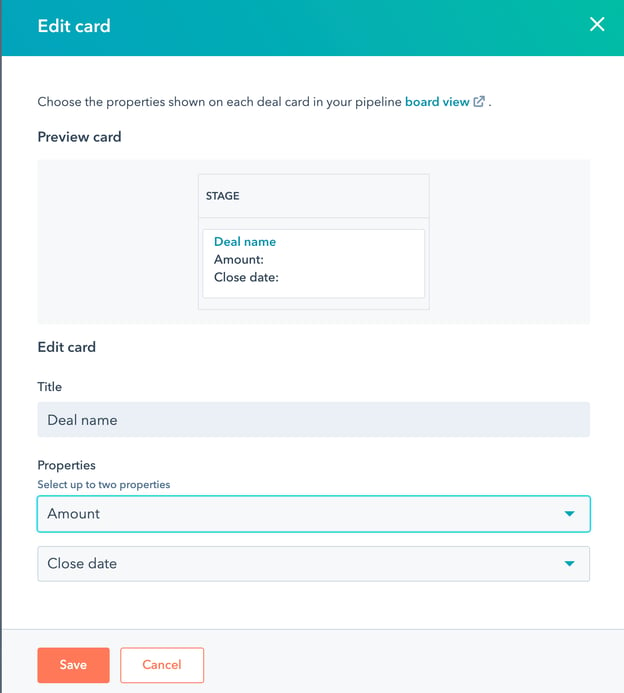
Working efficiently with the tools available to you. In our case we both use Google Workspace (Formerly G Suite). We also use this to organise and put together the show notes. We love the fact that we are working from the one place and we can plan and even add ideas on the go from wherever we are.
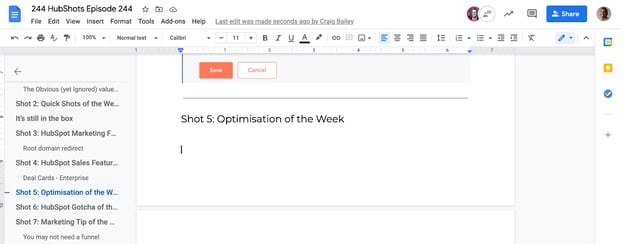
We discovered this when a client was using the Conversations inbox in HubSpot and also using their email to reply to contacts. They were getting confused as to which were read in their inbox vs the conversation inbox. So make sure you are not adding personal emails but shared emails that are accessible by others in HubSpot.
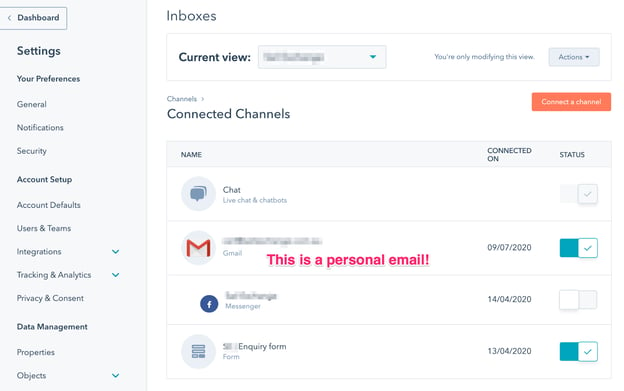
As marketers we can sometimes get too caught up in the ‘marketing funnel’ or ‘marketing flywheel’ mentality.
Depending on the business you are promoting it’s possible you don’t even need a funnel.
For example, for one of my wife’s sites we were originally taking the following approach:
This is a typical approach, and works well for many industries.
However for this particular site we’re skipping all this, and instead just running Instagram ads that link straight to the Shopify site.
Here’s the takeaway: there’s no one right marketing strategy that fits every business - you need to think carefully about what your product needs - for a low cost product (eg $50 or less) a full funnel is likely overkill. For a high cost product though it would be a different story.
Bonus tip: your approach needs to be as lean and flexible as possible ( cue ‘agile marketing platforms’) - so for example, if you’re using a Shopify site, make sure you can quickly update to try new features (eg ‘free shipping’ is a classic example of an offer that has drastic effect).
If you’ve been following the Basecamp story lately (with just about every news item using the word ‘implodes’ eg here) you might be starting to think about the policies at your own company.
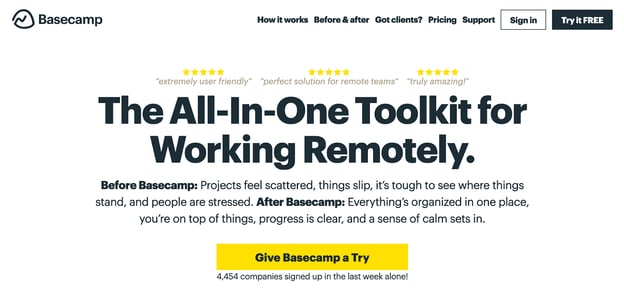
If you read the comments on Twitter you’ll see that many people feel strongly that their workplace should encompass societal issues.
I’m not going to argue either way (it’s a complex topic, and I haven’t yet read widely enough or considered deeply enough where I stand on it), however it does strike me that the idea of joining a company ‘to do your life’s work’ is a common aspiration amongst people (perhaps more so in younger).
Which (on another topic) lead me to this quote from Kevin Roose (author of Futureproof) in a recent post (which, to be clear was not related to the Basecamp issue):
“I think we’ll all look back on the 2010s as the era when tech companies used perks and free food to fool their employees into thinking they were working for summer camps and humanitarian NGOs rather than ruthless multinational behemoths.”
Putting the two thoughts together, here’s what I find fascinating: people want to have impact and meaning, and are willing to change companies to follow their drive for it. Corporates will take advantage of the drive.
What will you do in your business to empower your teams to have impact, whilst not taking advantage of it for purely profit motives?
As marketers we are in the business of influence - we can drive enormous impact - now let’s build teams and companies that support that and reward it fairly.
Via the HubSpot product updates blog.
This time a year ago HubSpot was adding Domain User Permissions for Account Admins. Does not seem like much but as everything grows access becomes more important.
I love this newsletter by Christopher Penn and the Trust Insights team.
They are essentially an analytics and data company, and the newsletter has excellent insights, advice and links to other cool resources. They’ve been an influence on how I approach this HubShots newsletter.
You can read previous editions of the newsletter on their blog here.
“If you don’t know what the most important thing you should be working on is, then the most important thing you should do is work out what the most important thing is to work on.”
Good overview by Ryan Jones of items that aren’t ranking factors, that people still get confused about. Word count and subdomain vs subfolder are two of my favourites.
Dr Pete discusses the changing landscape of long tail keywords.Are they increasing, or are they decreasing? The answer is Yes.
Straight from the ‘I haven’t actually read this, I’m just sharing it so that I look intelligent and informed’ pool, here’s a monster post from Jamie Indigo about core web vitals. It’s a 20 minute read and dives into all the details of core web vitals, how to investigate issues, and how to fix.
chrome://settings/content/notifications
"Sites can ask to send notifications" -> off
Via Steph Hippo on Twitter - the thread has the settings for other browsers as well.
I thought some readers may be interested in the books I read - here’s a photo of the bookshelf in my office:

You can view a hi-res version (12MB) of this from here.
I like to read all my non-fiction in physical format (whilst I tend to read fiction on my kindle) - I love the tactile experience of reading and marking up the books, underlining with highlighter, creasing pages, etc.
You’ll notice that they’re mainly focussed on business, marketing and personal development.
The bottom three shelves are all books I’ve read. The main top shelf (ie 4th from the bottom) is all the books I’m currently reading or re-reading - I like to switch between a bunch of books, depending on my mood.
I’m interested in what you’re reading - and what you’d recommend. Let me know.
Connect with HubShots here:
Connect with Ian Jacob on LinkedIn and Craig Bailey on LinkedIn
HubShots, the podcast for marketing managers and sales professionals who use HubSpot, hosted by Ian Jacob from Search & Be Found and Craig Bailey from XEN Systems.
HubShots is produced by Christopher Mottram from Podcastily.
Please share this with colleagues - it helps us improve and reach more marketers.
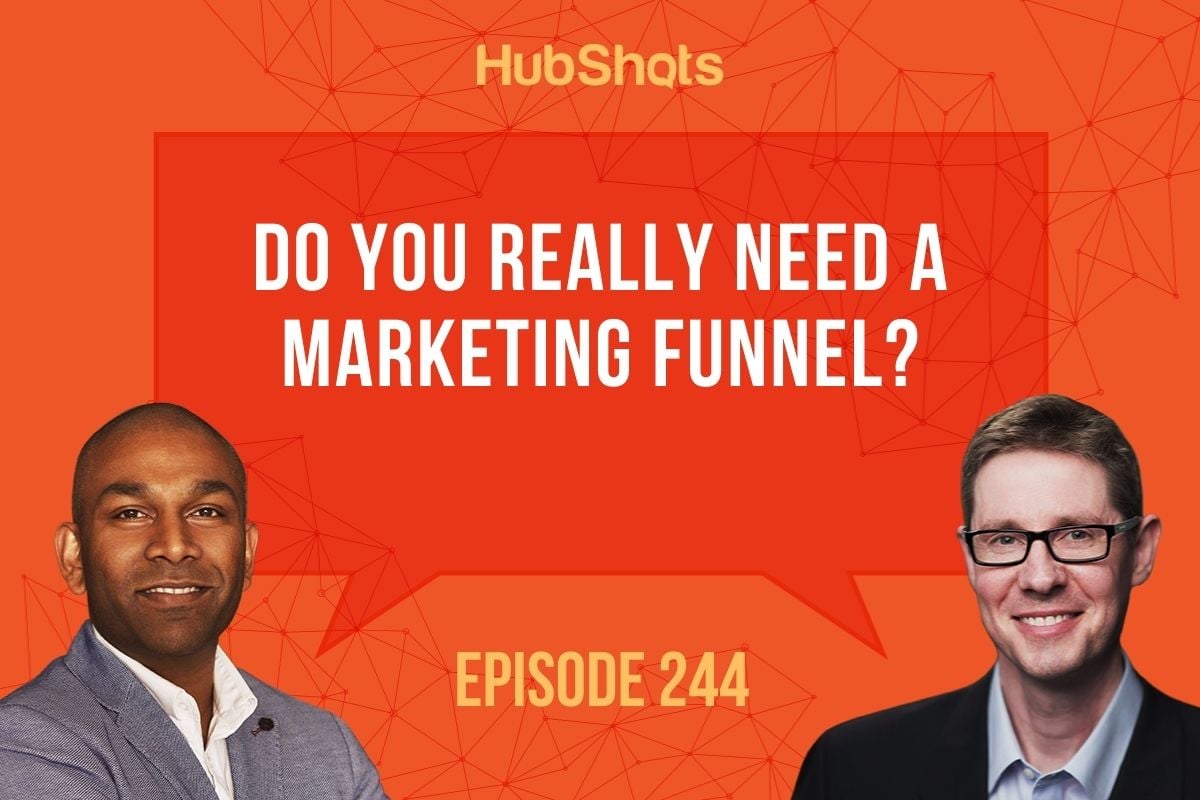
- Hi everyone, welcome to HubShots episode 244. In this episode we talk about, do you really need a marketing funnel? We talk about HubSpot child themes. The ability to sync iCloud/Apple contacts. The value of customer service, and a common domain misconfiguration in HubSpot. You're listening to Asia Pacific's number one HubSpot focused podcast where we discuss the HubSpot tips, tricks and strategies for growing your sales, service, and marketing results. My name is Ian Jacob from Search & Be Found and with me is Craig Bailey from XEN Systems. How are you Craig?
- Ah look, I'm well and quite a lot to get through on the show today.
- It's cracker of show.
- It is, and it's almost like an even split between actually HubSpot specific stuff and general concepts and stuff so-
- That's right.
- Some thought pieces in there. If you're only here for the HubSpot tips, then you might be a little bit disappointed, but if you want to think more widely than perhaps, yeah, you'll enjoy it.
- Do you know what? I'm just going to encourage listeners to broaden their horizons and be challenged by other things because you never know what you can find out, or figure out. And, you know, we often talk about things, it was interesting the conversation we had today that started on a particular, I think it was almost HubSpot topic and ended up somewhere very far, far away by the end of it. Weren't we were discussing vaccinations?
- We were!
- Its quite fun. I love catching up with you. Actually, this is one of the benefits of doing this podcast. Nevermind the fact that we put podcasts general chance to catch up and chill out and chat about stuff that's really useful.
- That's right, all right so in talking about that, the growth thought of the week Craig is an obvious, yet ignored value of customer service.
- I was reminded when I was reading Avinash Kaushik's newsletter. Do you actually subscribe to that?
- I do, I love his newsletters.
- It was from a couple of weeks ago where he was talking about how he had a really bad customer support experience with two different companies. I think one was a cable company one might've been FedEx, I can't remember. But just really bad customer support. And I was thinking about this because it does seem strange that these days big companies still provide terrible support. I mean, how can they survive without it? And then I was thinking about a recent situation with one of our clients and to be clear, this is a big brand, I won't mention their name, but they're big global brand and they've recently cut their customer support budget. And so I'll just explain what they did. We're working with the marketing team and the marketing team are kind of shaking their heads. And by the way, shout out to them they'll probably be recognized. I know they listen to the show .
- Probably know, "Oh yeah, they're talking about us." Totally out of their control, and they're kind of like bewildered as well. But what the company has done is they've said, "Right we're gonna get rid of all phone support." So before people used to call and talk to customers. Well they're going, "No, we're cutting that." Now you've got to submit all your customer support by a form on the site. They were thinking about maybe having a chat bot, but that's not in place yet. So it's a form. You fill out a form and it's a pretty brutal thanks for your inquiry, no indications about timeframes or anything. Like it's about experience. It's kind of... That's the support of a decade ago, right?
- Yeah correct.
- Anyway they're a bit corporate in doing this. And so they've cut the customer support budget. At the same time, this company who we're working with doing the marketing has increased their marketing budget. And in fact, they've just launched this initiative called the customer retention project, I'm not making this up, Ian. The whole point is to better engage with customers and drive a longer lifespan with them and possibly, you know, increase customer--
- Lifetime value.
- Yeah, like lifetime value. And so it's kind of like on one side marketing is trying to do this, and have been given approval with budget and on the other management up, you know, further up the chain has cut customer support. It's really weird.
- It's also counter-intuitive isn't it Craig? Like we're trying to drive something but what we're actually doing is driving an opposite behavior.
- It is weird. And you know what's funny? Now they're looking at their stats on website usage--
- And I'm sure it's up.
- And this is exactly right. People are confused. They're going, "Oh, how do I contact support?" They're cruising around the side, clicking trying to find it and they're more frustrated. And of course, if you'd look at that just purely a numbers, it looks like as you said-
- Average session has increased markedly Craig.
- It's a win-win success. What is marketing done to increase engagement? Nothing. Actually, all we've done is frustrated our visitors more. So that's almost a side effect that if it's not properly analyzed or diagnosed you could potentially see an effect being a positive when it's actually a negative.
- What are our thoughts Craig, if we were thinking about how could we solve this?
- Alright, well, the first point is that will cost savings short term at best and really hard to gauge in terms of sales loss down the track. So we kind of know that. But the main point I think is in any of these situations if you're going to put forward a position, which says, "Look we do need to have customer support increase." You've actually got to do it with numbers-
- Correct.
- You've actually got to be able to show metrics. And so from a marketing side or customer service department, which in this company's case, customer service is just a small kind of subset under the sales arm. So they're not really KPI'd on anything as far as I'm aware. So really they've got to get metrics in place that shows things such as using surveys to show customer satisfaction, being able to measure or correlate increases in sales or upsells in relation to that customer support. Things such as churn rates, and in fact, things like a refund rates.
- That's right, yes.
- If people were requesting more refunds-
- Yep.
- In response to a lack of customer support, because often customer support can be a place where disgruntled people are heard, and actually become longer-term customers.
- Correct.
- I often think if the customer reaches out to complain, I see dollar signs. We can turn... you know, this is feedback that we can use.
- That's right.
- And then the last one is just a... which you actually reminded me of which is a very good point, measuring the number of online reviews that customers make. 'Cause if you see that go down, it's possibly a sign they weren't getting great customer support so they don't leave a good review or even worse they start leaving negative online reviews on these review sites.
- That's right. So measuring that kind of stuff, correlating it with timings around customer support initiatives. Is the information you need to basically provide evidence that a customer support base is valuable. Now marketing can help with this in terms of things like surveys, of course. And because marketing is often across not only site metrics but perhaps outer metrics on online review sites. So they can help compile this information. And then further, the marketing team can also use even helping things like easing the experience. If someone has to go and fill in a form maybe marketing can help with just some followup sequences perhaps even straight away giving them indications of timeframes, not leaving someone, just kind of--
- Yeah, that's right.
- In the dark.
- Even leading them to a knowledge base. So if you're using service hub with the knowledge base that's just another way to easily get to some information or uncover information for people. I think it's a really key aspect in trying to understand, "A", who the people are. So we've been working with some customers where they might say, "Okay, we've got a particular type of customer that we service and we don't want them to go to the knowledge base, but we want them to go straight to live chat." So we understand who they are first up. And then we route them appropriately. And if they're this kind of customer, the knowledge base is actually a better place for them to start. So all of these things really matter to people because I know for a fact and I've worked with a company that sells products globally. And one thing that we discovered was that their support or follow-up was really bad. Like people were like, "I can't connect my product to the app." "The app's not working." And no one ever got back to them. And I'm like, after we implemented HubSpot, and I got all this through, I was like, "Guys you've actually got another problem." "It's not to do with the product it's to do with all the things that come after people get the product in their hands. And we need to address that to solve the problem." Because how do you get raving fans, Craig? Is... They're going to think about that last experience that they had that was rather ordinary instead of being extraordinary. And I always tell people, "That's kind of life, right?" I always liken it to the Lexus experience. You know, like you're going to Lexus... So listeners in Australia, if you go into a Lexus dealership the first thing someone says to you, apart from, "Who would you want to see?" Is like, "Would you like a cup of coffee?" They'd give you biscuits. If they see you've got kids they give them drinks and they give them some snacks. So everybody feels comfortable. It's like you've come to somebody's house. That is what they remember. You know, it's not about, "Oh yeah, go sit over there at the desk. And someone will be with you." It's a whole different experience. They've got a couple of lounges. You know, they make you feel like you've come into their home, so to speak. And you know what? It's a whole 'nother experience.
- And then so many good experiences. Like we mentioned on the show, Amazon, of course, great customer support WP Engine, we've mentioned them many times on the show and of course HubSpot.
- Correct.
- Excellent customer service. Can you imagine if the HubSpot came out, "Oh look we gonna cut phone calls and you just gotta submit a form and that..." Like, HubSpot are great. You just... you actually put in your number, they call you, it's like exceptional.
- That's right. And you just think they're also different channels where support happens through. So if some people might not want to talk to somebody, they like the chat feature. The ability to talk to people on different channels is a massive benefit. And I would not discount that at all. When we're talking about things that are happening on a day-to-day basis because people want to communicate how they want to communicate.
- All right. Well, there you go. Think about how you in the marketing team can help with customer support. If you're gonna put forward any initiatives make sure you back them up with evidence and metrics. And of course always be mindful of the fact that if you reduce your customer support you're actually opening up an opportunity for your competitors to exploit that against you. 'Cause they'll provide better customer support than you.
- Here's a little something, good feel story to finish on. We were doing some support surveys or NPS surveys initially with customers in our customer base, and we uncovered somebody said they really loved the product. And that supports that NPS survey that went out, triggered them to go, "I really want to buy another one." Now everyone can say, "Oh, that's fantastic." But if they hadn't gotten that somebody in sales would not have got an opportunity or whoever's managing that account would have not got the opportunity to sell a second item. So you just never know what it uncovers and the ability to further your business and to take the next step. There's something you can do. Also onto a quick shot of the week Craig HubSpot has soft launched child themes.
- This is great. I, I learned about this from Kevin at Helpful Hero. And we've linked to him in the show notes. It's got a good post about it, but you actually learned from a separate company.
- That's right, because we've been implementing a new theme and we were thinking, well, how are we going to manage this? Because one of the things that couldn't happen before Craig when we had templates is that if you modify the template you could get the updates, but then you'd have to basically reapply everything in with themes, it's making a whole lot easier to manage it and probably be able to upgrade having the upgrade path a lot easier with things going forward.
- We've been wanting this right? Just HubSpot-
- WordPress.
- Has had this for years, it's not a new idea. And look, it's great to see HubSpot putting it in place.
- The next thing is you can add Google Mate as an option to your meetings tool.
- So, similar to how there's the integration with Zoom. So you have those meetings, people can sign up on your website or book a meeting. Now you can say, oh, choose a Google Meet instead of a Zoom meeting.
- And the next thing that I'm so excited about Craig is HubSpot's built an integration with iCloud, which is if you have an Apple device you know how exciting that is. And it's got Copper, Pipedrive, SugarCRM, and Drip and just means that you can keep those contacts in sync across HubSpot and your Apple devices. Okay Craig is it still in the box?
- This is just an excuse for you to put a picture of a really nice sports car, but the the analogy we're talking about. So we're promoting a new HubShot's 2018 marketing challenge. By the way, only to listeners. If you go to the website you won't see it in navigation, we're still polishing it, and to listeners, we've got the link in the show notes like you to just register your interest where you can't even buy it at the moment we're just registering interest. As we build out this challenge which is training platform, really, we want to make sure it's excellent, by getting feedback. But the point behind it, you're like, oh it's like having an awesome car. HubSpot is like having an awesome car that you keep in the box for many people because they never actually get a marketing campaign going.
- That's right, so here we go. I think this came from our conversation over coffee, Craig. It was like having that car and having it in the kit in a box. So the first thing you need to do is you need to be able to assemble the kit, right? So you've got to put all the parts together and you've got to configure and check that everything's working and tested. That's a really big thing that people often forget. You need to make sure you've got all the fluids in the car. So have you got the right kind of oil. You got the gas, the petrol make sure you've got all of that stuff in. You've got your tires pumped up. That's another thing you need to do. Then tune everything to make sure it's working well and learn how to read the dials so you know what to do. So a really good analogy is because we work with mechanics. One of the things we often hear people, they go, oh I see this engine light on my car. Oh, it's orange so can't be that bad, I'll keep driving. And only to discover that they've got an issue in the engine and it just takes a matter of time and the car just comes to hold. They haven't got enough oil, engine is seized, replace engine there goes $10 - 20,000 straight out the door, just because they didn't take note of that warning light that was on the dashboard. And the fifth thing is learn where all the controls are, so you know how to optimize your driving experience and you even may need training on how to drive the car. Because one of the things that you might discover is it has a lot of power and has a lot of systems that you don't understand how to operate. So getting the right training will also help you operate it. And there we have it. It's pretty much like using HubSpot marketing professionals. If you can, if you can master this then you can get your car on the road.
- And if you've got no interest in cars and were wondering what the hell was that all about? Kind of like me in a way, but I just know that we want to help you get a marketing campaign in market in four weeks, don't leave HubSpot in the box. Let's get it working for you.
- All right, HubSpot marketing feature the week Craig and this is to do with an often overlooked root domain redirect that people forget to put in when they're creating their HubSpot site.
- Yeah, that's right so most people will know that when you build your site on HubSpot CMS, it'll have a "W" "W" "W" at the front. So www.hubshots.com because that site is on HubSpot. Now what's if you don't put the "W" "W" "W" in, well if you haven't configured it, for example at your registrar, if you haven't put it in it'll actually give an error. And so with HubSpot, now you can set up a redirect domain. They, I think they made this available at the end of last year or early this year but it's been overlooked and we've, we actually had a client this week say, oh, how do we put this in place? Very simple, it's a redirect domain. We've linked to the knowledge base. You basically put in a in your DNS, point a HubSpot and it takes care of the rest. It even takes care of the SSL and everything, redirecting to the "W" "W" "W". So, all simple to do in HubSpot now.
- All right, on to HubSpot sales pitch of the week and deal cards. And this is in Sales Hub Enterprise and this is something that many people have been asking for on the deals where they might want to say I want to see a different property, I might not want to see when we deal with lots of builders they might not actually want the close date of the deal. They might want to have another date which might be like a tender acceptance day, which is when some money gets transacted and they start their client journey. So this is a great upgrade and we put some screenshots in the show notes, that shows you all the different places you can do it on the cards and the property sidebar, and even what shows up on the dashboard. So it's really key, and obviously there are a certain limit to the properties that you can see and there are deal properties. On some you can show three deal properties, on the others you can only show two. But it's really clear, it's well set out and definitely worth it if you've got enterprise features.
- Incremental improvement.
- That's right. And so just so you know it's not that you've got to have Sales Enterprise. You could have Marketing Enterprise and Sales Pro and this would still work.
- Oh, is that right?
- Correct.
- I didn't realize that, we better update the show notes because I said Sales Hub Enterprise.
- So I think if you have an enterprise hub this will work. All right, onto our optimization of the week Craig. Now I was thinking about this and how do we work efficiently? I thought, hang on again, here we are creating show notes sometimes we start creation when we are apart from each other and then we come together and we do stuff. We even update show notes while we're having coffee, right? I thought, wow, that's pretty interesting because I was working with a client. We were trying to put together a presentation or a Webinar that they wanted to do. And they were like do the whole script and then give it to me, and I started doing it in Google Presentations and I was adding stuff. And then I was, as we were adding things, somebody else on their team was adding some pictures and more information. And I also told them, I said, "Hey why don't you practice or do a loom, use loom to practice your Webinar of the slides?" And as you're doing it, you know we were all sitting in the room together. I said, we'll get more ideas, I might see something that you haven't spoken about, and we were updating slides and they turned around to me and they go, oh wow. This is like a whole different way of working. Like, you haven't given me this whole run sheet. We pretty much just iterating as we go along and we've got the tools to iterate and make this better. And after that whole session, they were like, wow this is a whole better way to do things. And it just made me realize there are things that we take for granted every day that people are just discovering. And this is one of those great tools that we have used now for our customers, for ourselves, even with ourselves to just to better manage how we put information together how we present it and how we convey it.
- I think you're so right, we take it for granted. We use Google Docs and other clients use online Microsoft on that. We've got government clients where they're still just using actual files.
- Correct.
- And so we do a spreadsheet and they send this spreadsheet as an attachment. I can update it, oh, nice ones made them a change to that. Oh, here's my copy, can you put, I just can't believe it's infuriating. For them they're actually banned from using Google. Yeah, I think government funds do that. I don't know security risks or things like that but I wish I'd just use online Microsoft. I don't know why, it's, I don't understand. And you're right it does seem just so second nature to us to just use these collaboration tools and yet so many corporates and businesses still aren't that's what do you say? It's hard to change that.
- But if you are listening and you do use this tools and you sometimes might not be aware that this is available, it's a great place to start. A HubSpot gotcha of the week Craig? Logging from Outlook or Google to HubSpot versus the conversations inbox.
- This is a common trap, we've seen this. We've each seen this with a number of our clients fall into this trap. Yeah, just explain the situation.
- So the situation here is you can connect your inbox into HubSpot to track your emails, but in the process you might accidentally hit the connector shared inbox and your whole inbox ends up in HubSpot under the conversations inbox. Now, sometimes you might want that but majority of time you don't want that, right?
- Well not, well, not for personal inbox.
- That's right.
- It's normally going to be a support inbox.
- Exactly so a really good one that we've seen that's connected is things like sales at your business, or info at, or support at your business. That is a shared inbox. So whoever's on the team that needs to manage it or manage the throughput of that inbox. It's a great place to do it. But in this instance, we find someone's personal email. So like Craig, it's in being in that inbox and then everybody has access to Craig or they, the scenario we found was somebody connected their inbox. They did realize that, and they were utilizing the conversation inbox to reply to people, but then also go to Outlook and going, oh hang on. I thought I replied to that in the conversations inbox. But in my Outlook, it's showing still is it's a unread. And that's when we discovered that this was the problem. And then we decided we had to figure out a way that we need to work through this. And sometimes it, you know, it's what seems counterintuitive might be valid to that individual or that business and then work out what we needed to do.
- So look, the summary is for a personal inbox you probably want just the Outlook connector. And if it's a generic at sales, at support, at inbox, then the conversations inbox, connected inbox is probably what you want. Confusing, but if you just follow those rules probably will save you a lot of hassle.
- That's right, I think HubSpot's improved it greatly too Craig, so you get a few warnings before you connect now. All right on to marketing tip of the week, Craig. You may not need a funnel or a ply wheel.
- This is perhaps counterintuitive to many listeners and it will depend on the industry that you're in.
- Correct.
- But we've been accustomed to this approach which says, oh, you've got to have a funnel or a flywheel. I know the funnel is dead, but you know anyway the funnel would typically be, and let's say for a business it would be, look, build valuable content on your website promote that on social, people come, they sign up you build an email list and then you can promote your product. And we've done this for many years for our clients and also many of our own personal sites and brands. I want to say, well, remind people that you don't necessarily need to do that. And I'll give an example. So my wife's, one of my wife's businesses, we're launching and she's got a product cost $49. It's a low cost product, and we've done plenty of these in the past. You know, actually my wife and I have been building these businesses for more than a decade, so we still use the whole content marketing approach. Now what we're saying is, you know what? We're just going to use Instagram ads and point straight to the Shopify sales page, and it's working. No funnel, no follow-up emails, no nurturing. We do use remarketing of course. And we've actually got another product, another audience which is only on Etsy where we can't even track it. We don't even know the stats. We only correlate between traffic from Instagram and the sales that we see in, in in, Etsy sales reports, right? So there's not even a closing the loop and there's definitely no nurturing. There's actually not even really followup because customer support's really low as well. So the point of saying all of this is that in these situations you don't really need a funnel. And so this whole content strategy we used to have on the blog and all that, it's like, nah we're not doing that. We're just putting money into Instagram ads. And I want to raise this, not as a suggestion for listeners in the tactic to use, because that'll depend on your situation, but just the thinking behind it, which is challenge perhaps what you thought was conventional or the way to go about it, and think about it and test and measure. And I think this is really important for people because it actually needs to be as lean as possible. Now there are dangerous. What if we get banned from Instagram? Okay that channel, the entire sales trends gone. that's fine for my wife's business. It's one of many businesses diversified. That channel goes and we'll look for something else, but we're actually getting sales straight away and we can get ROI measurements on it. So that's the point you may not need a funnel. And I think there's many businesses. And I actually think the price point at which this is valid is increasing as we have more disposable income and businesses just want a quick purchase. I think this can go up in the hundreds, possibly even to the mid a hundred, $500. I think there's actually a price point you can get with just a simple ad pointing through. If it's the right solution to a problem people have, I don't think it needs the funnel. Anyway, I'm just putting that out there. Feel free to disagree with me and show me your numbers. That's the, I guess the thought I wanted to mention
- You're quite right. When you speaking about that today, Craig I just gave you an example of something that had happened to me with my wife. She was looking at a piece of jewelry. I'd never heard of these people. She's obviously consumed a lot of the Instagram or Instagram posts I would believe. And it got to the point where she felt so much of a connection. She was like, oh, I really want this. I want this particular ring, I want these earrings, her birthday's coming up. So thankfully she told me what she wanted. So that made my life easier. But you know what, when I ordered online I didn't know the size, I discovered they're not far from your office. I paid them a visit this afternoon. I said I'll pick it up, walked in the store, they had it there, I was able to take another ring so I could get a measured. I chose the wrong size. So they, they swapped it there, which was fantastic. But I actually told them, I said, they do a great job on their Instagram, because from all of that my wife has just spent, got me to spend hundreds of dollars on something that she wants. Now, I think that clearly lines up with what you were talking about in terms of understanding people's behavior and how they're buying things and what you can do in certain industries, fields or demographics to get people in through the door.
- I think that's a good example. I'm going to, I'm going to make one closing comment. Cause I just want people to be clear though, that I'm not suggesting this for every business or-
- That's right.
- You know, building your entire business on one channel. Right? So if you're on a big B2B business or you've got 10 20 staff and more, you're not going to say, oh we're just going for an Instagram strategy and that's the entire resting the whole business on that. That's not what I'm saying. All I'm saying is test and pick, well, actually challenge your preconceived assumptions about marketing channels, test and measure. And let's see how we go.
- All right, on to inside of the week, Craig.
- Yeah, have you been following this Basecamp story?
- No I can't say I have.
- This is very topical, and so perhaps even by the time this goes live it will have all blown over. But at Basecamp they make a, quite a property project management tool. They also make that HEY email tool. Anyway, they announced some company policy changes. I won't go into them, but a lot of staff didn't like that. And perhaps even a third of staff have resigned over it. Okay, now I haven't read widely enough or thought deeply about this enough to have an opinion on their changes whether they're good or bad or otherwise I'm merely just highlighting this is going on. And if you're on Twitter there you would have seen all kinds of commentary about it. Hold that on one hand so that their company policies changed and it just actually meant that people couldn't talk about some things on company channels that they could before, that's part of it. Hold that on one hand, on the second I've been reading this book, Futureproof by Kevin Roose where he's talking about how automation is essentially taking over a lot of industries and how you can future-proof yourself personally against that. A great book, by the way.
- It's a bit like a Business Made Simple. I think he talks about that in there as well.
- Yeah he does.
- Yeah.
- And what value do you provide? Because if your sole value can be replaced with a robot or automation then that's not value you're providing.
- Correct.
- That's disposable. Right, so anyway, on the other hand, he's saying looking at corporates because, there has been this perhaps misleading approach given by corporates to say, yeah, come here have you ever heard this expression and do your life's work join X, Google, or Microsoft, do your life's work here. And as this aspirational incentive to come and do significant work at a company and I'm not saying that doesn't happen, it does. But people aspire to do that, we all want to do that. We want to have meaning we want to have impact in the world. So I have these two concepts. Part of your impact is impact on society. So Basecamp, perhaps saying, look, none of that on work channels. And then historically looking at companies that have promoted that approach, and they've masked it with kind of like, and spend more time at work doing your life's work and we'll pay for, you know lunches and perks and all that kind of thing. Here's the comment from Kevin Roose, which I think is really interesting. He says, "I think we'll all look back on the 2010s as the era, when tech companies used perks and free food to fool their employees, into thinking they were working for summer camps and humanitarian NGOs rather than ruthless multinational behemoths." I find this fascinating. So putting the two together, people aspire to make an impact and companies can abuse that to purely focus on profit. Here's the takeaway, think about in your business and especially as marketers, we're in the job of influence think about that impact that we're doing and driving and let's build teams and companies that not only support that and let people meet those needs, but also do it fairly. Let's not abuse that drive that people have to want to do good and squeeze every profit piece out of it.
- All right, onto HubShot's throwback of the week, and this time a year ago HubSpot was adding domain user permissions for account admins. And this does not seem like much but everything grows and access becomes really important. And we've seen this in recently even just with the ability to delete.
- Yeah, controlled [crosstalk 00:30:13]. The whole user permissions model has, has grown really well, I love it.
- All right, onto our resource of the week, Craig.
- Yep, in the Headlights newsletter by Christopher Penn I love his stuff so we've got a link to that.
- And our quote of the week Craig.
- I was reminded of the next, my wife reminded this. Yeah. Have you read Essentialism?
- Yeah, I think I have started-
- By Greg McKeown
- Yes.
- Yeah, she's just got a new book that's come out. But here's his comment. Well, I don't know if he made this exactly. I'm kind of paraphrasing . It's kind of saying, "If you don't know what the most important thing you should be working on is, then the most important thing you should be working on is working out what the most important thing is to work on." I think that's a really good point.
- It is a very good point.
- We've got a ton of bonus links. I won't go into them. And then down in the book shots of the week I've actually included a photo of my bookshelf because one or two listeners might actually find this interesting, most probably won't .
- And listeners you can actually download a high resolution picture so you can see exactly all the books. [crosstalk 00:31:15]
- This is just my work bookshelf, by the way all my workbooks, which I read in physical format I read non-fiction in physical format. Whereas fiction, I read on my Kindle.
- And listeners for those of you who do look at the picture, there are some other interesting things on Craig's bookshelf, and I put the challenge out there to reply to him and tell him what they are. This is thank you for listening again. The 28 day marketing challenge is there. Please sign up and register your interest, share with other people that you know that who are using HubSpot or even considering using HubSpot because this would be a great way for them to get started. Until next week Craig.
- Catch you later, Ian. Hey there, thanks for listening to this episode of HubShots to get the latest show notes HubSpot tips and marketing resources, sign up at hubshots.com. You can also book time with us to help you grow better with HubSpot.
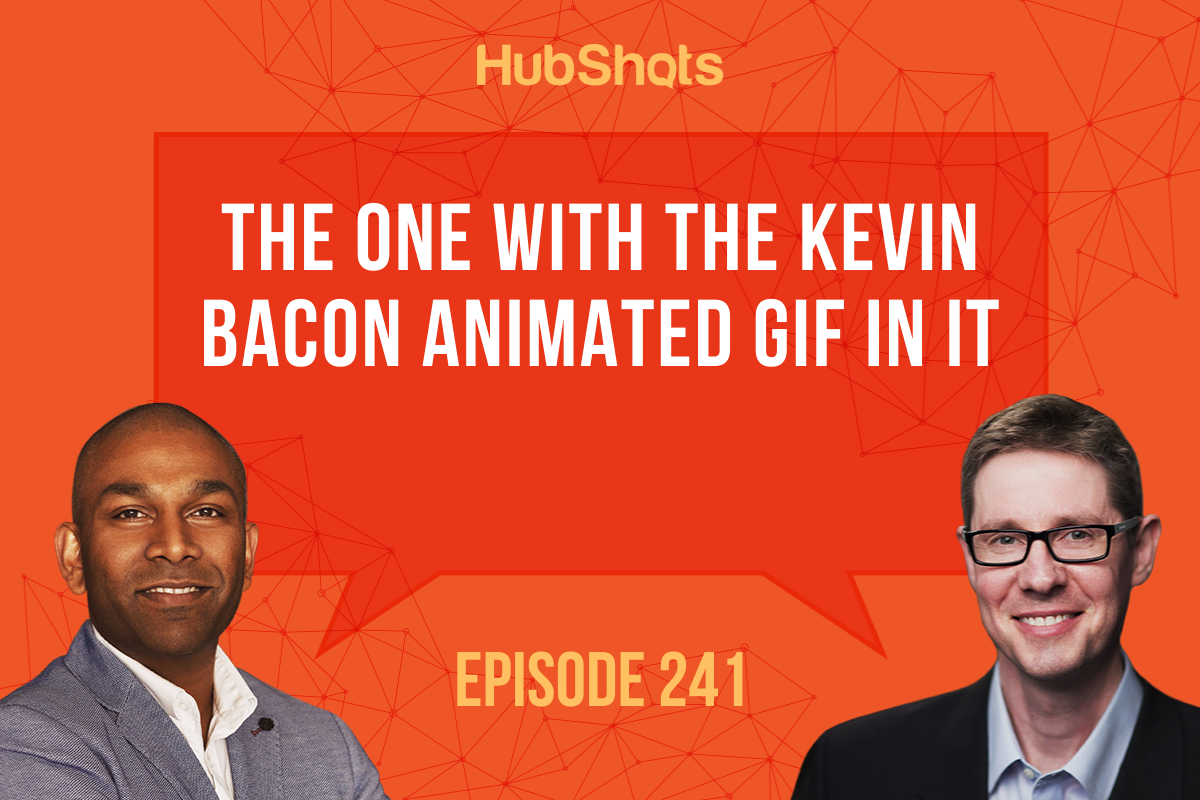
Welcome to HubShots Episode 241: The one with the Kevin Bacon animated gif in it This edition we dive into: Whether you actually read these notes ...
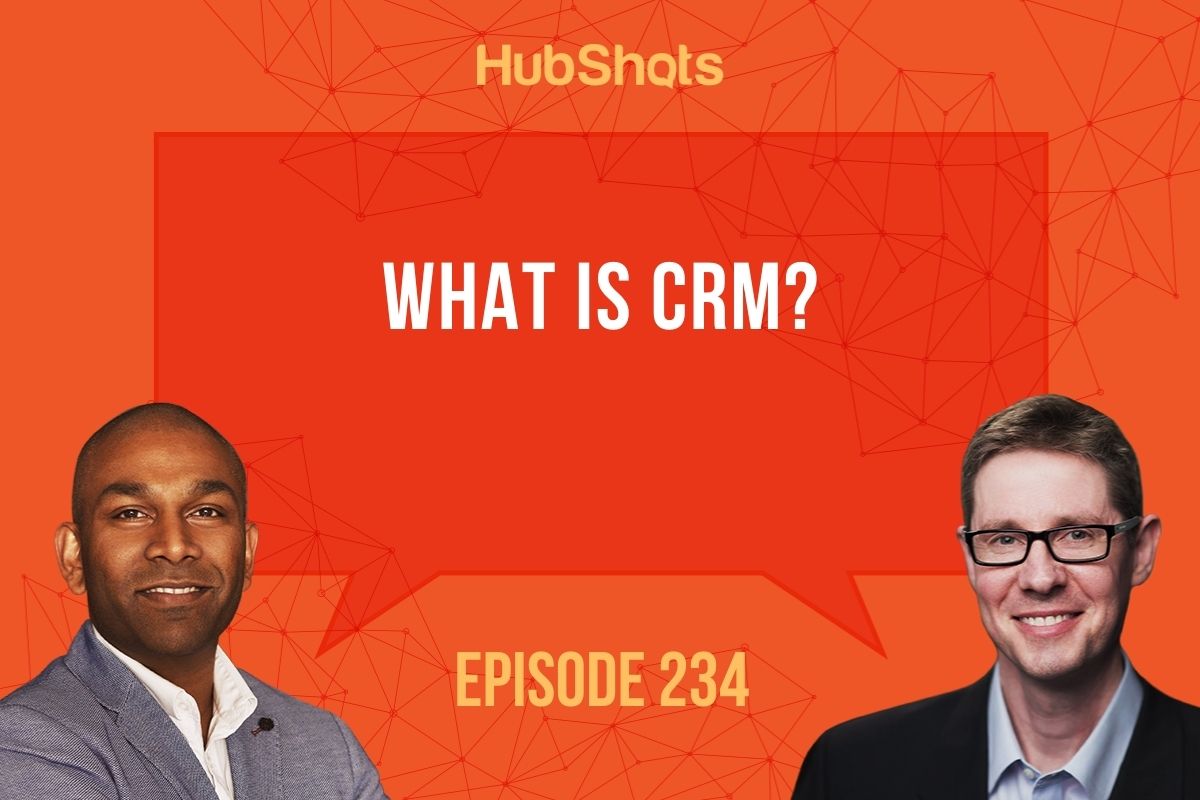
Welcome to HubShots Episode 234: What is CRM? This edition we dive into: Thinking about CRM and how it relates to marketing HubSpot’s SEO audit...
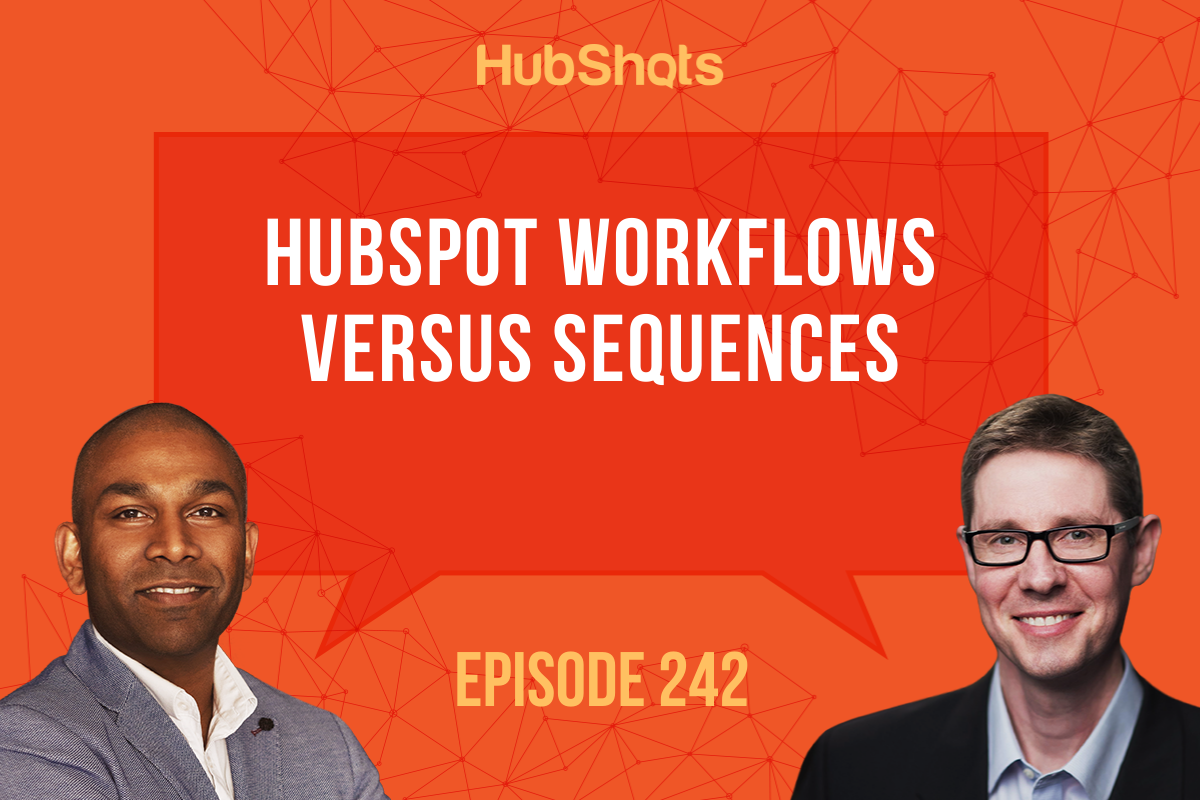
Welcome to HubShots Episode 242: HubSpot Workflows versus Sequences This edition we dive into: HubSpot Workflows versus Sequences - which should...